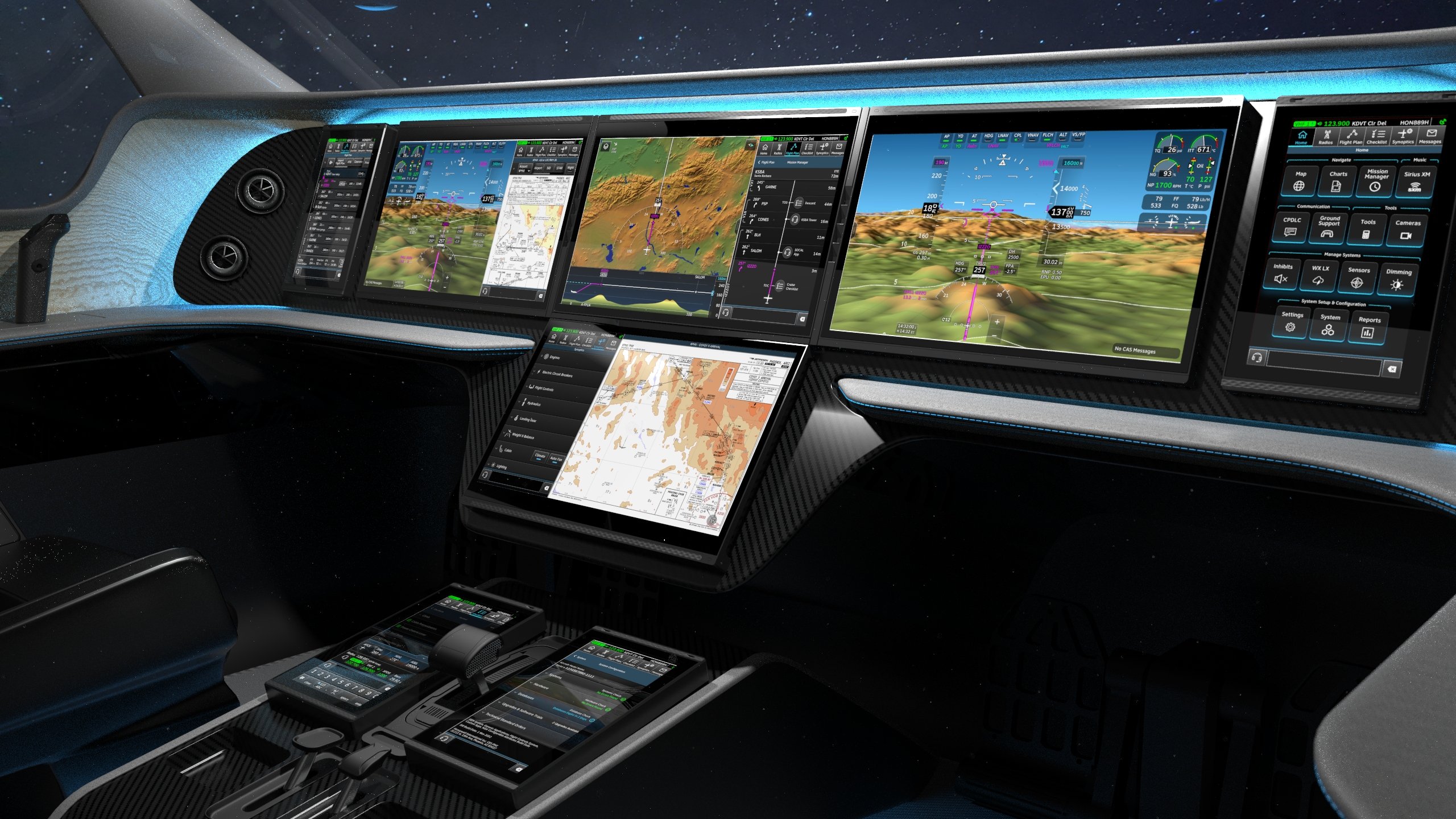Click Here to View This Page on Production Frontend
Click Here to Export Node Content
Click Here to View Printer-Friendly Version (Raw Backend)
Note: front-end display has links to styled print versions.
Content Node ID: 419235
The seven-seat Lilium Jet and Vertical Aerospace’s four-passenger VA-X4 eVTOL aircraft will become the first advanced air mobility (AAM) vehicles to benefit from so-called cloud-connected avionics with the adoption of Honeywell’s new Anthem system. Honeywell’s October 5 introduction of Anthem marks the launch of the first such system to benefit from cloud connectivity. The Phoenix-based company sees the application of the Anthem in virtually every civil aircraft market segment and expects early adoption by AAM players.
Honeywell says it designed the system with connectivity and autonomy as its core tenets, from automating manual tasks for single-pilot operations to more complex processes that reduce the workload for all the pilots, mechanics, and other service providers in a large fleet. The system can also grow, adapt, and support additional automation, leading to what Honeywell believes will result in complete autonomous capabilities in the future as regulations allow.
Historically, offboard systems haven’t integrated with onboard avionics and required wired connections for data transfers, resulting in disjointed individual support systems such as fuel, maintenance, and catering. As a result, pilots must often interface with many third-party apps pre- and post-flight.
As the world’s first so-called always-on, cloud-connected avionics, Anthem generates and transfers data from ground-based servers that remain always available to any person involved in a flight’s operations. An aircraft doesn’t need to be powered on for pilots and maintenance personnel to get to work on a flight, explained Honeywell.
“Everyone who touches a flight is able to get information that matters to them when they need it,” said Vipul Gupta, Honeywell Aerospace vice president and general manager of avionics. “The aircraft becomes accessible via the cloud computing infrastructure, and things like maintenance data, flight plans, and overall aircraft status are stored automatically by the avionics in the cloud and accessible by any authorized user from anywhere.”
By speeding the process of pre-flight preparation, Anthem’s connectivity capabilities cut pilots’ time in the cockpit by some 45 minutes per flight, estimates Honeywell. The system integrates with electronic flight bag (EFB) planning applications to let pilots create and transmit flight plans to the aircraft from anywhere. Honeywell calls such remote flight plan loading an industry first.
Beyond the benefits experienced by pilots and operators, service providers from maintenance personnel to caterers will gain a higher level of visibility into real-time flight details than ever before, says Honeywell. For example, pilots can prepare notifications prior to traveling to the airport so that fueling teams, ground transportation, and caterers know if the plan has to change for unexpected weather.
Honeywell in June 2020 announced plans to form an Unmanned Aerial Systems (UAS) business unit to advance the aerospace group’s ambitions in the AAM sector. The division carries its own engineering and sales resources and offers aircraft systems, including avionics, hybrid and electric propulsion, thermal management, air traffic management, and ground services such as predictive maintenance.
This past June, Honeywell announced an agreement with Lilium to provide the fly-by-wire flight control system and the avionics for the Lilium Jet, but details of what would become the Anthem system remained under wraps. To become the first electric jet to take off and land vertically, the seven-seat Lilium Jet cruises to a speed of 175 mph and a range of about 155 miles.
Vertical Aerospace’s engineering team continues work on the first full-scale prototype for the four-passenger VA-X4 as they prepare for a first flight later this year. Plans call for it to fly with Honeywell’s flight controls and a complete avionics suite but not with the production version of the electric propulsion system, which Rolls-Royce continues to develop.
“One of the many great things about Anthem is its ability to fit any aircraft—both literally and figuratively,” said Stephane Fymat, Honeywell Aerospace’s vice president and general manager for urban air mobility and unmanned aerial systems. “It’s scalable and customizable, meaning we can bring this into almost anything that’s currently flying or will fly in the future. That’s great news, particularly for our UAM customers.
“The VA-X4 and seven-seater Lilium Jet will revolutionize urban and regional air travel," Fymat added, "and those will be some of the first platforms in the world to use Anthem, which will, in turn, completely change the way in which we pilot aircraft.”
